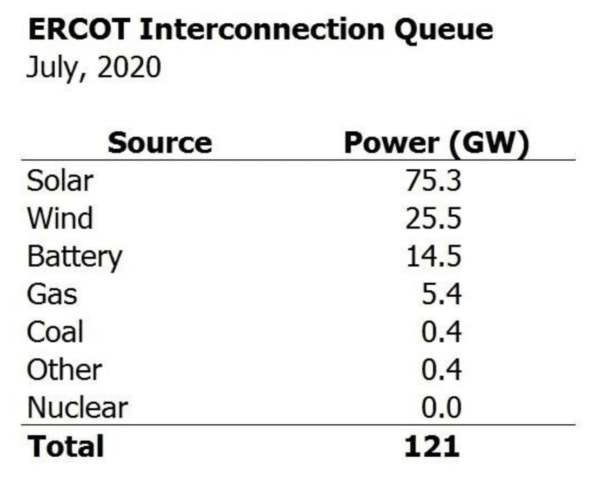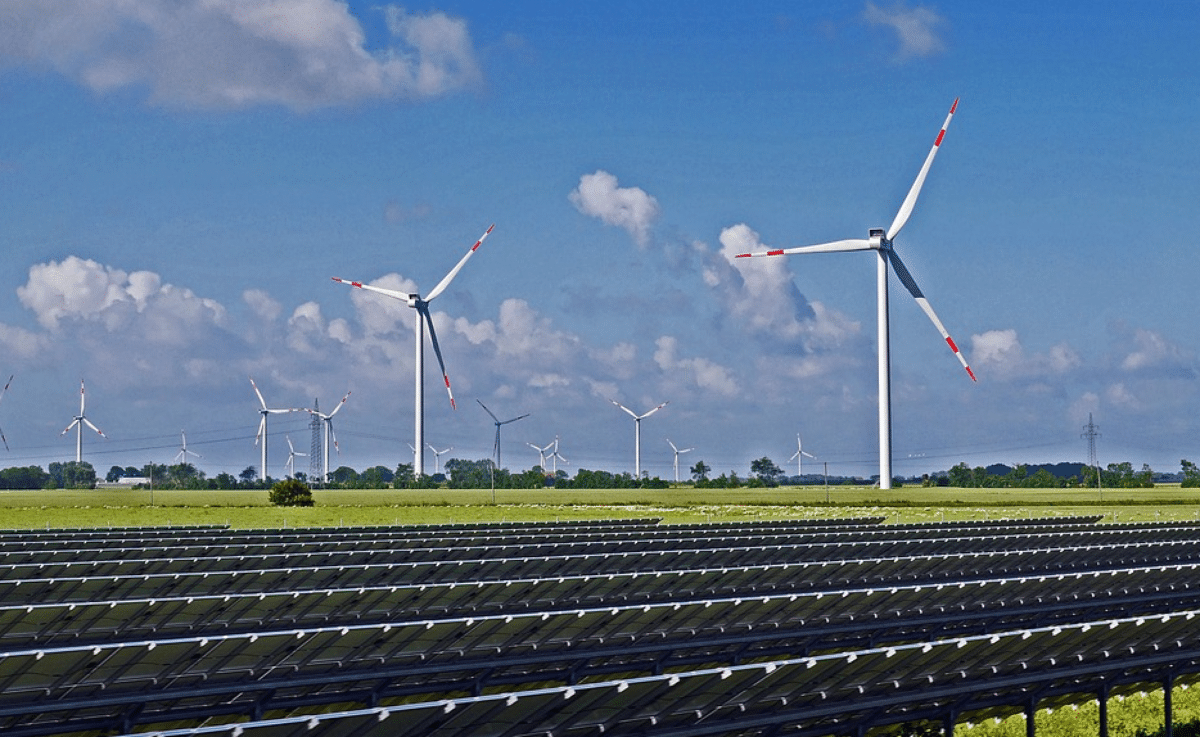If you want a glimpse of the future of the clean energy transition in the United States, a good place to start is Texas — specifically, the state’s interconnection queue, where solar, wind and storage dominate the list of projects applying to get on the grid in the coming years.
Of the 121 GW of new utility-scale generation applying to the Electric Reliability Council of Texas (ERCOT), the state’s grid operator, 75.3 GW are solar, 25.5 GW are wind and 14.5 GW are storage. Fossil fuels lag far behind, with natural gas at 5.4 GW and coal at 400 MW.

What makes these numbers significant, of course, is the Lone Star state’s historic and ongoing connection with the oil and gas industry — and its lack of any incentives for solar or wind. Still, in recent years, it has also become one of the nation’s largest and fastest-growing clean energy markets — leveraging its abundant sun, wide open spaces and deregulated wholesale electricity market.
The Solar Energy Industries Association (SEIA) anticipates the state’s solar market will grow over the next five years, from 4.6 GW to almost 14.5 GW, putting it only behind California as second in PV generation nationwide.
Clearly, the trend toward competitively priced clean energy in the U.S. is well past the tipping point. As California moves toward its goal of completely decarbonizing its grid by 2045, the state’s interconnection queue currently has only five natural gas projects on it, totaling about 819 MW out of an astronomical 87 GW of solar, wind and storage.
Even PJM Interconnection, the country’s largest grid operator, covering 13 Midwest and mid-Atlantic states and the District of Columbia, has 14.6 GW of fossil fuel generation in its interconnection queue versus 52 GW of solar, wind and storage.
The very obvious caveat here is that not every project on an interconnection queue will be completed and go online. But applying for and getting an interconnection agreement — a long, expensive process — is a key step in the development of any new electric power generation. Ensuring a project will be able to connect to the grid and participate in wholesale markets shows investors, utilities and other corporate energy buyers that it is viable.
Still another caveat is that a strong renewable energy pipeline notwithstanding, natural gas and coal still account for almost two-thirds of the nation’s electricity generation, according to the U.S. Energy Information Administration. Wind is producing 7.3% of our power, and solar, 1.8%. While 14 states and the District of Columbia now have 100% clean energy targets, most have set deadlines of 2045 or 2050.
The growth of the solar, storage and wind industries will depend on how fast we can move from project pipelines to an electric system that provides power cleanly, safely, affordably and equitably across the country.
This content is protected by copyright and may not be reused. If you want to cooperate with us and would like to reuse some of our content, please contact: editors@pv-magazine.com.








Good article Kay. But one note on the figures in the second-to-last paragraph: That 1.8% is only utility-scale solar. When you add in distributed solar, it gets to about 2.3-2.4% of US power in 2019. And 2020 is already better.
It’s K, not Kay